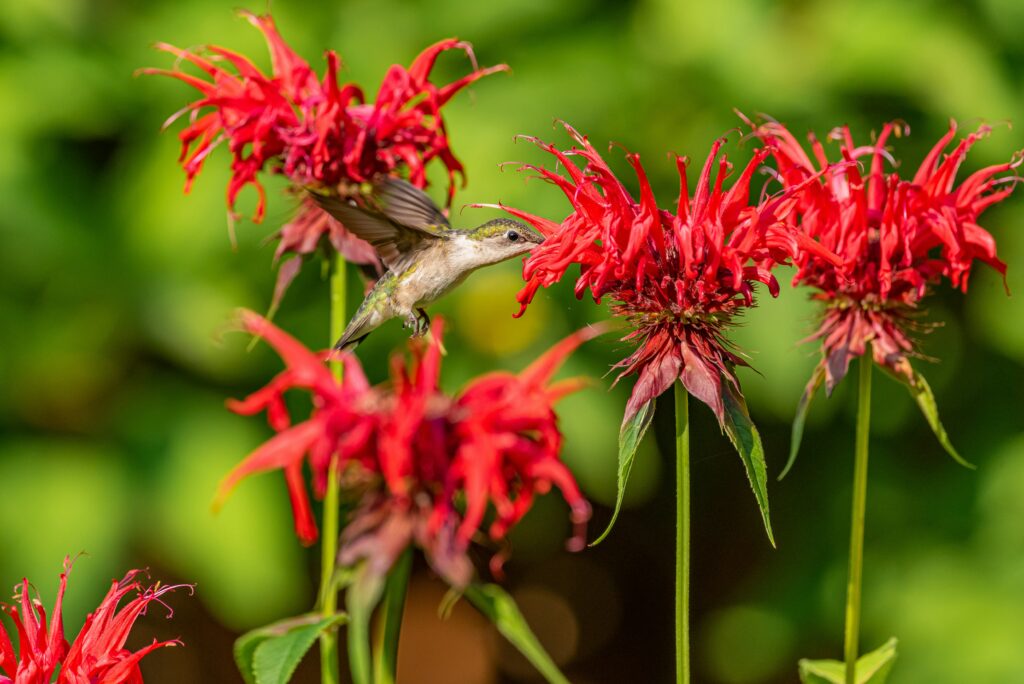
Forget the thermometer, you know when the warm weather’s here when you see hummingbirds! Hummingbirds are incredibly smart little birds, capable of navigating great distances and clever enough to return to their previous summer’s feeding grounds. Their diet consists of nectar and small insects, with flower nectar as their main preference. To attract them, plant a yard full of nectar-rich plants. June is an excellent time to plant, so get out in the yard and start on your hummingbird garden with some of their favorite annual and perennial picks below!
PERENNIALS
Foxglove
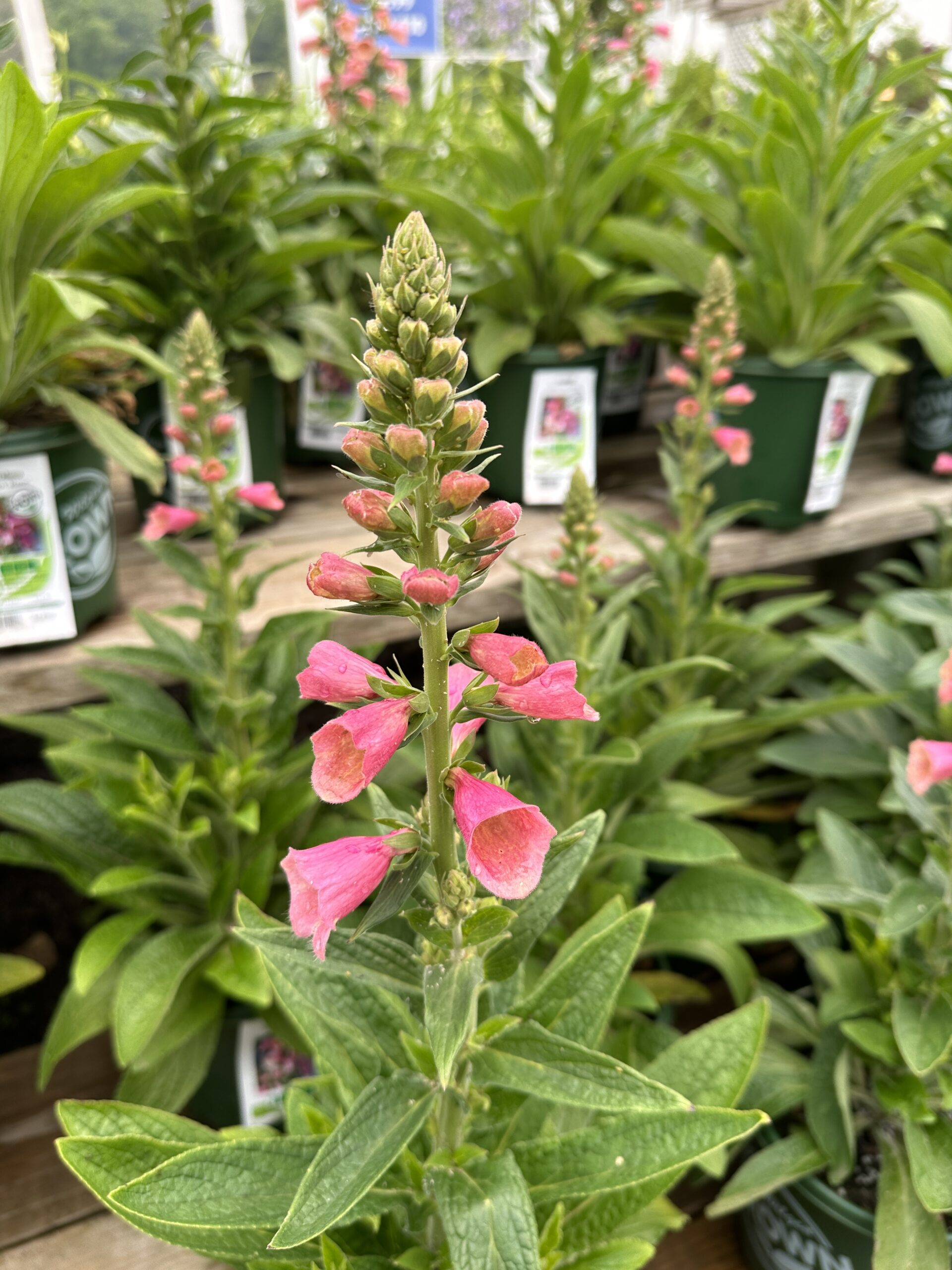
Foxglove offers a ton of nectar in their tube-shaped flowers which hummingbirds and bees love. They also come in a beautiful variety of colors like deep pinks, peach, and purples, and have unique speckled throats.
Monarda (Bee Balm)
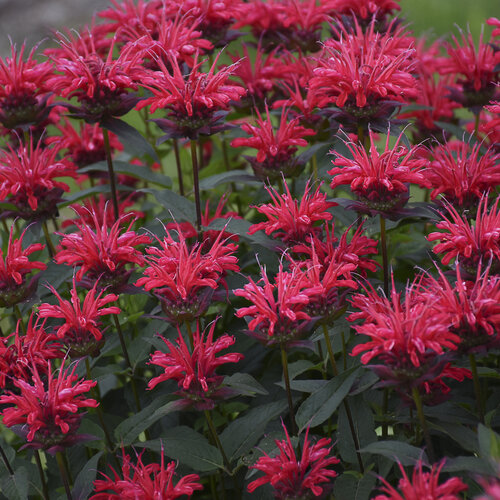
Photo Courtesy of Proven Winners: www.provenwinners.com
Bee Balm is surging in popularity as it is a well-known favorite of hummingbirds and one of the best options to attract them! It is also attractive to butterflies and bees, so you will see a ton of pollinators coming to visit. This plant does best in full sun, but can be grown in partial shade.
Hosta
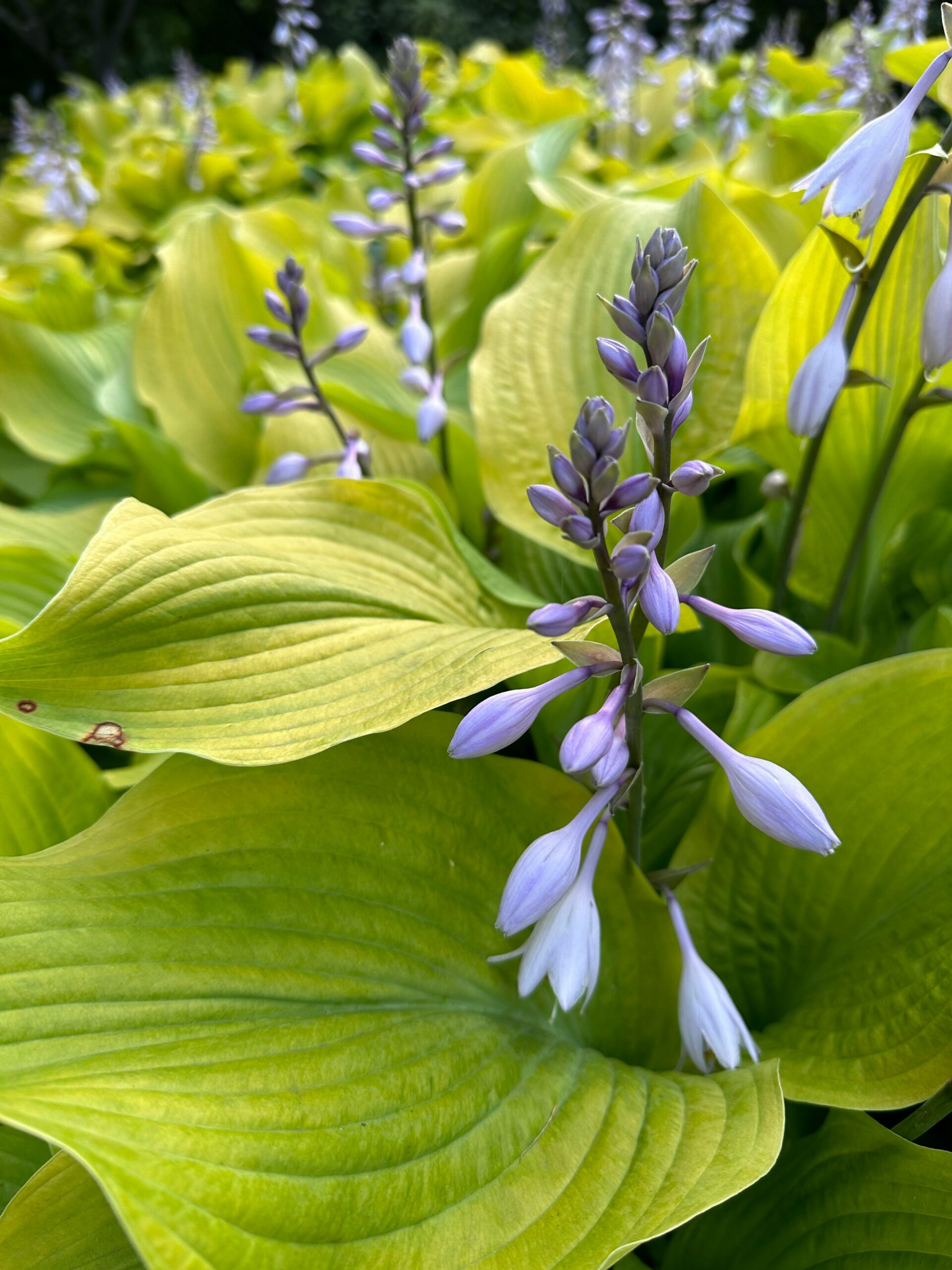
This popular shade perennial is also a great choice for hummingbirds during their bloom period! Hostas usually flower for about 3-4 weeks between May and September, depending on the variety. Choose a more fragrant variety like ‘Stained Glass’ or ‘Royal Crest’, since hummingbirds tend to prefer these over less fragrant ones.
Gaura
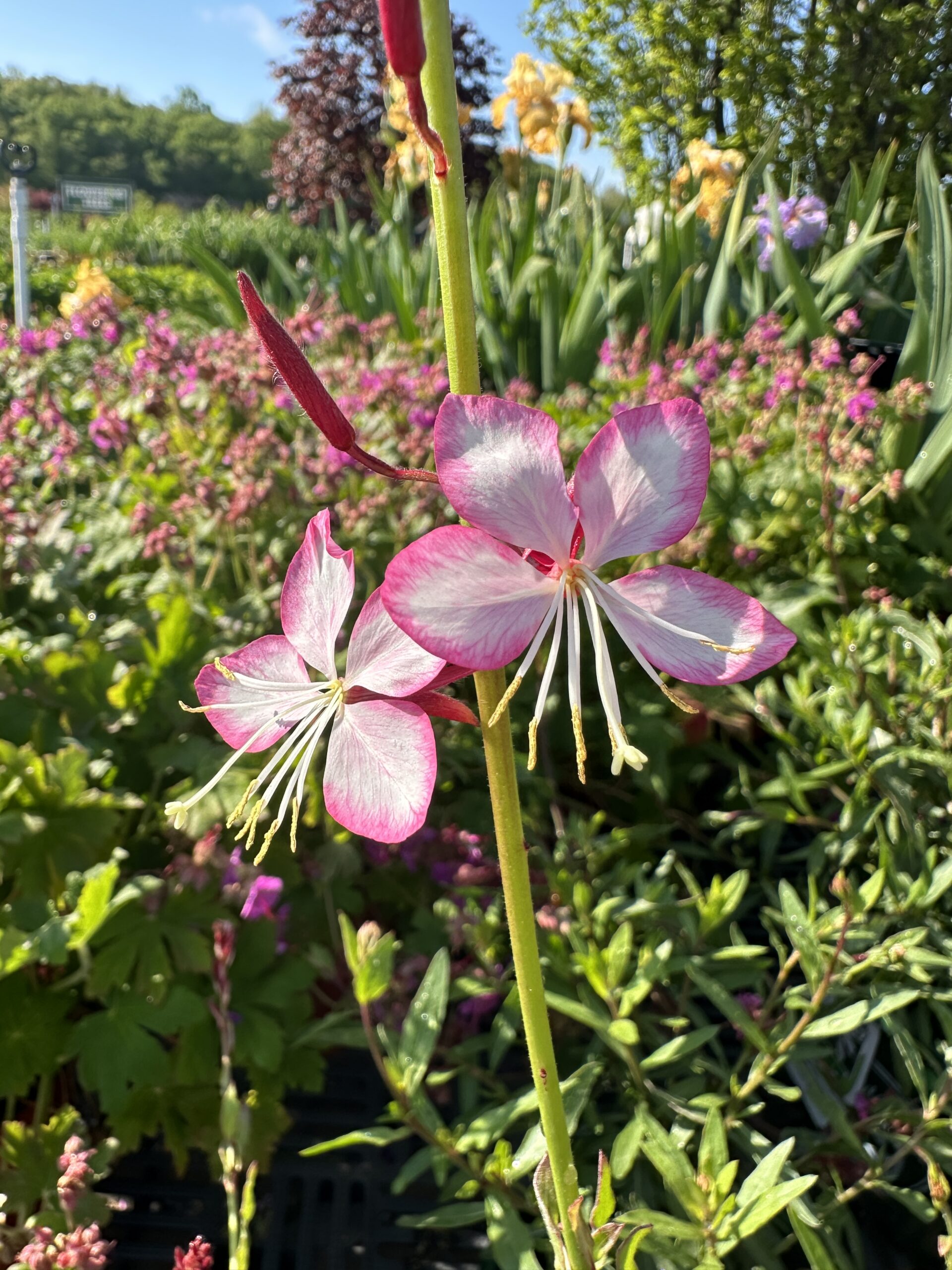
Gaura is an excellent low-maintenance perennial option with good drought tolerance, perfect for withstanding high heat! Put this in your pollinator pathway and watch bees, butterflies, and hummingbirds enjoy them.
ANNUALS
Salvia guarnanitica
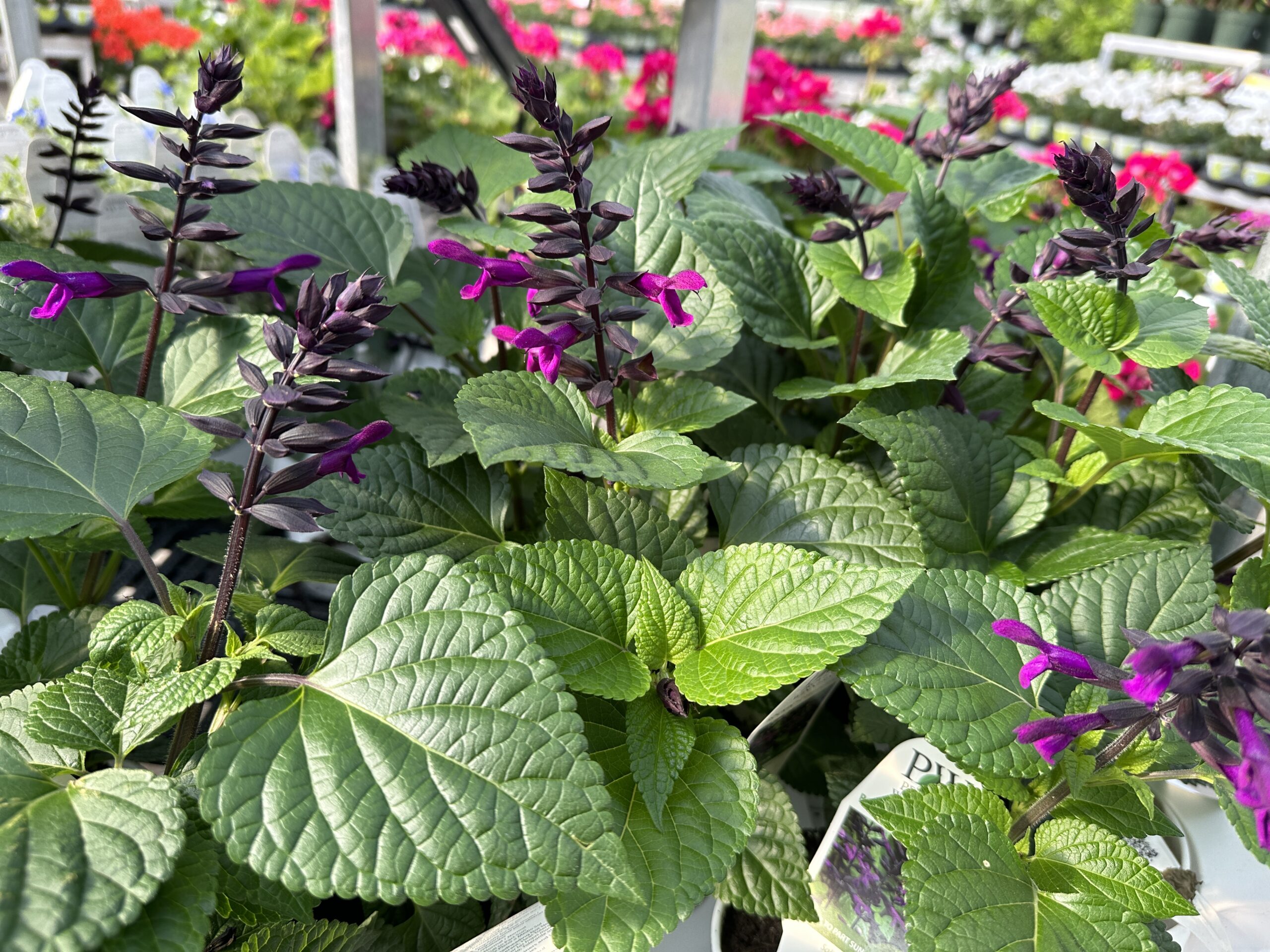
This annual is a fabulous summer performer for full sun and an excellent hummingbird magnet. 2 to 3′ tall spire flowers begin in May and continue until October. This salvia dispels the myth that hummingbirds only frequent red flowers. Yes, these little birds are attracted to reds but forage from countless other colors too!
Cuphea ignea “cigar plant“
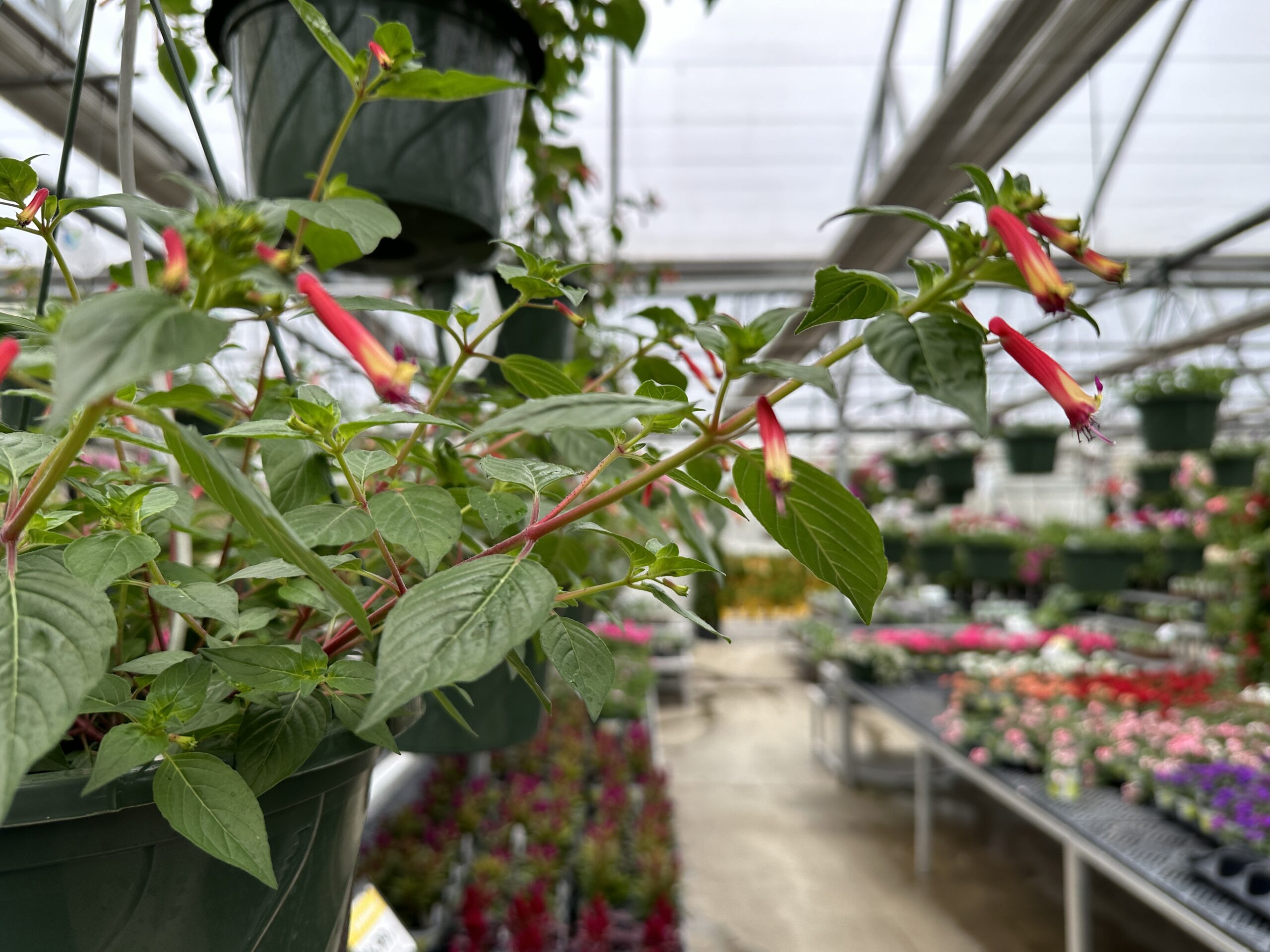
Orange, tubular flowers cover the bushy plants starting in summer and continue until frost. Cigar plants have tons of flowers and are nectar-rich. More flowers mean more hummingbird visits! This annual can be used as a bedding plant or in containers.
Lantana
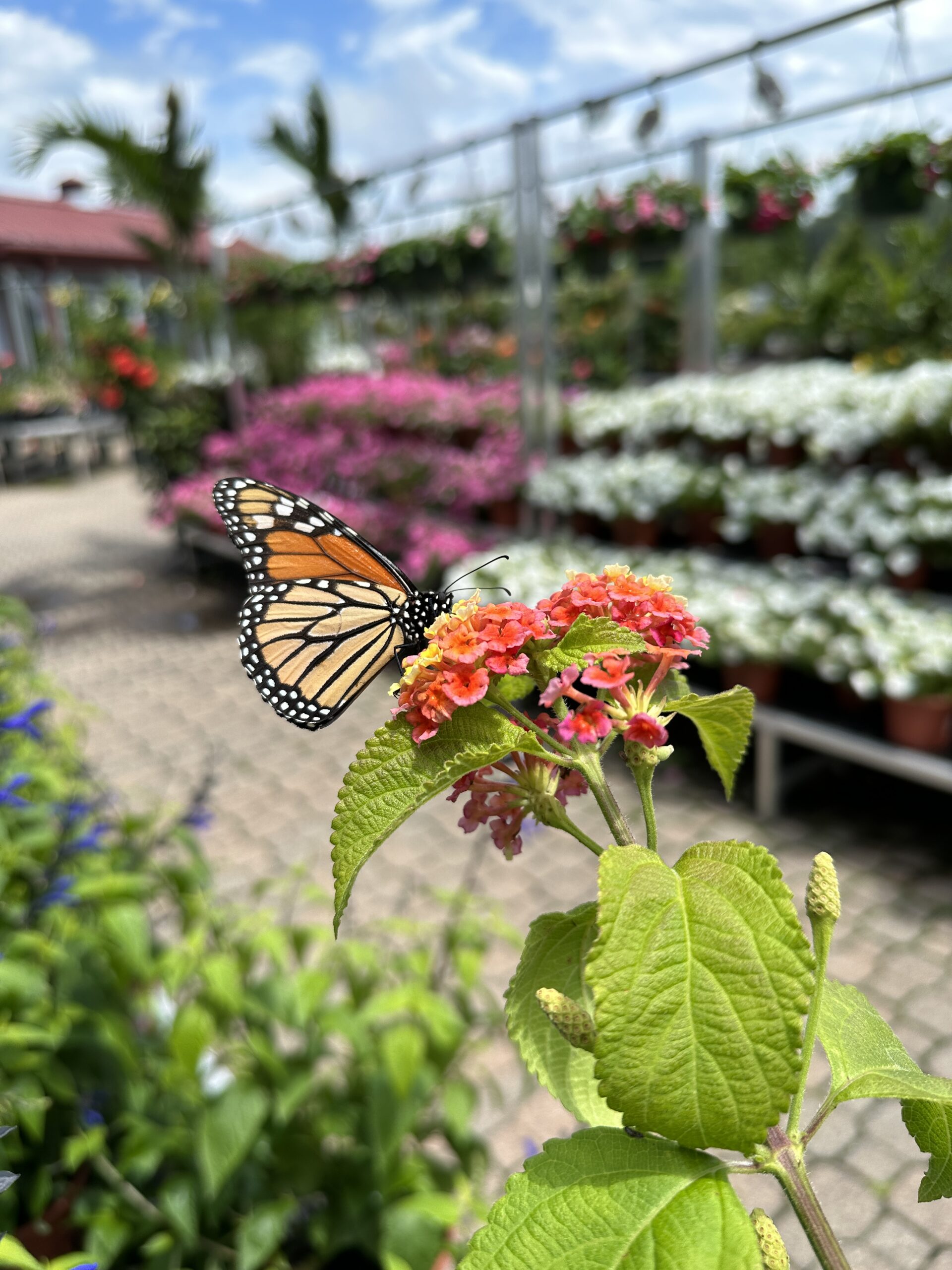
With its bright colors, fragrance, and plenty of nectar, Lantana is frequently visited by pollinators! It is an excellent container plant and able to withstand high temperatures. It is also left alone by deer and rabbits and is relatively disease-free.
FEEDERS
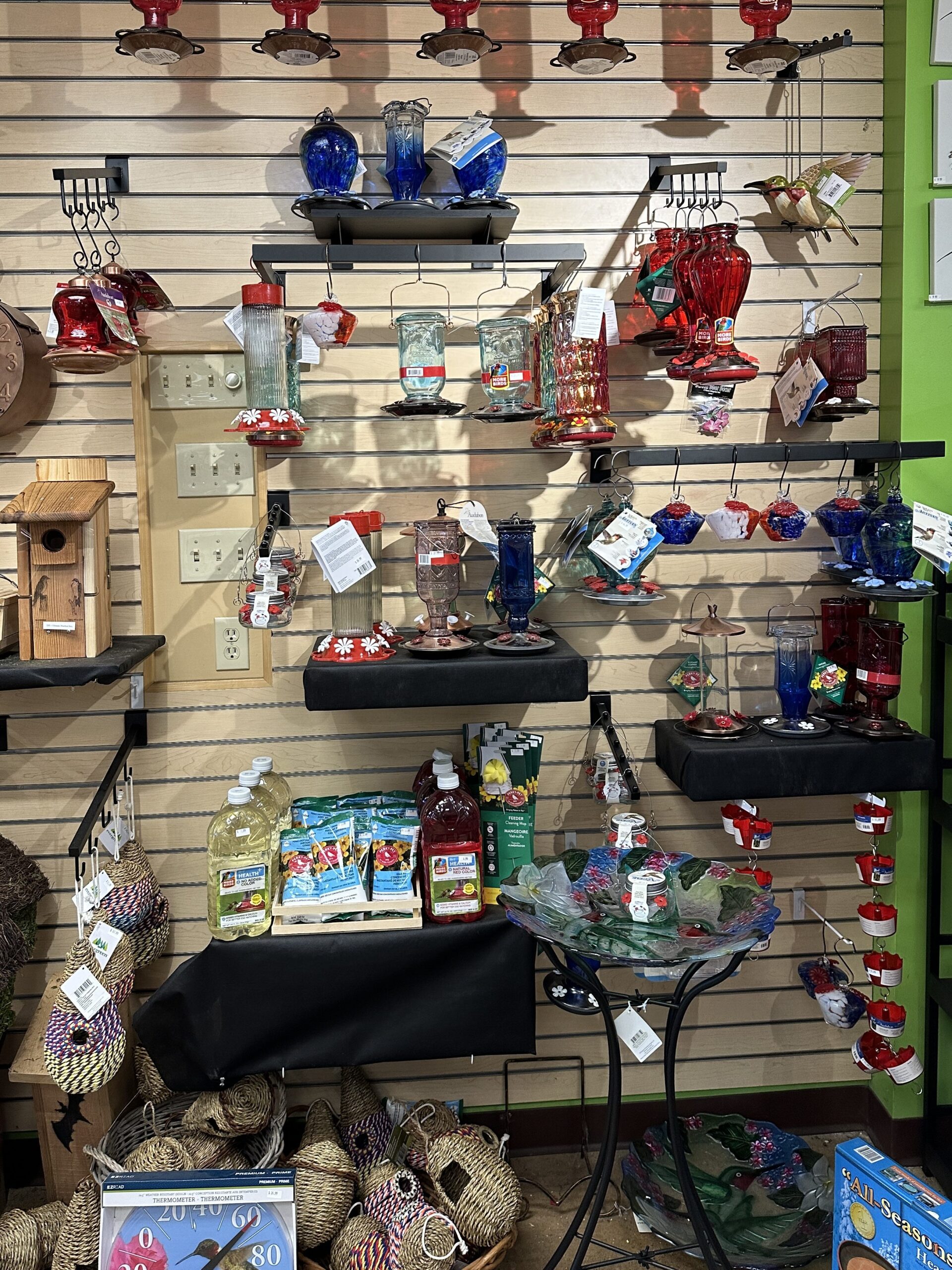
Start getting hummingbirds into your yard right now with our large variety of feeders!
Everyone loves to watch this beautiful bird. There are many ways to attract them to your yard.
Let’s start with hummingbird feeders. There are feeders for hanging or with suction cups to attach to your window. Some come with a built-in ant moat or you can buy them separately to keep the ants out of the nectar.
One of the most important things to remember is to change your nectar every 3-5 days before it begins to ferment. The weather can affect how long it will take. When the nectar begins to get slightly cloudy it is time to make the change. Remember to clean the feeder when you change the nectar. A quick wash with hot water will do.
Now the best place to hang them… place them in a spot where you can enjoy them. You need to know they are territorial and are not really into sharing. Hang additional feeders close to each other and you will attract multiple hummingbirds at a time. This limits his (yes, the males are the worst) ability to hog more than one feeder.
There are many plants that attract hummingbirds. Here a few of our favorite perennials: Crocosmia ‘Lucifer’, and all varieties of Penstemon and Agastache. Add these plants around your feeder and hummingbirds are even more likely to pay you a visit.
Enjoy your hummingbirds!
Elaine Blackstone
National Pollinator Week is a time to give bees, birds, and bats a little recognition. Pollinators, such as bees and butterflies, play a big part in getting our gardens to grow. Honeybees are directly responsible for pollinating one-third of the food we eat. They help fertilize flowers, carrying pollen from one plant to another in exchange for food.
This week, we’re helping to educate people on the purposes these pollinators serve. Keep reading for three ways to celebrate pollinators in your garden.
1. Plant a Pollinator-friendly Garden
To keep your garden beautiful, you can attract pollinators by planting flowers that appeal to them. Try adding native plants to an existing garden or creating a whole new garden specifically for pollinators. Choose plants that bloom at different times throughout the year, providing long-term food and shelter. Follow this simple formula. Plant tall flowers 18-20” apart, medium flowers 12” apart and short flowers 8-10” apart, and then use Espoma’s Bloom! liquid plant food regularly for a boost.
Pollinators especially love these flowering plants:
- Allium
- Alyssum
- Basil
- Bee balm
- Bergamot
- Cosmos
- Geranium
- Globe thistle
- Goldenrod
- Helianthus
- Lavender
- Mint
- Poppy
- Rosemary
- Sage
- Sunflower
- Thyme
- Verbena
- Wild rose
- Zinnia
2. Build a Bee Hotel
Solitary bees, bees that live alone and not in hives, need a place to make their nests. Welcome these gentle bees to your garden by adding a bee hotel. Solitary bees don’t make honey and rarely sting. Females lay their eggs inside a small hollow tube and then they patch the door with mud. DIY or purchase a bee hotel at your local independent garden center to encourage pollinators to check in to your garden.
3. Increase Feather Pollinator Population
Insects aren’t the only pollinators around town. Hummingbirds are also great pollinators. Build a Hummingbird feeder in your yard to encourage our furry friends to stop by. Ask kids to help to build a feeder that will attract these polite birds. The plants that are pollinated by Hummingbirds tend to produce more nectar than plants pollinated by insects, so penciling in some time to create a feeder will pay off in the long run.
This post is brought to you by Espoma
If you’re excited to see some butterflies at your home this year, I’m going to share one of my favorite (their favorite too) butterfly and hummingbird attracting container recipes.
1-4″ Van Wilgen’s Bloom Booster fertilizer, the more blooms the more butterflies!
Plant your Black n Blue Salvia in the center of your container for your thriller, then surround it with the 3 Lantana, our colorful fillers. Finish the pot off with some Verbena spillers, water it in, and you have yourself the ultimate hummingbird butterfly attraction! To keep your visitors happy all summer, always feed your container gardens, and pick off spent flowers to encourage more to come!
Forget the thermometer, you know when the warm weather’s coming when you see the return of the hummingbirds! They’ve been spotted already in Connecticut gardens!
hummingbirds! They’ve been spotted already in Connecticut gardens!
Hummingbirds are incredibly smart, little birds. To attract these little birds, here are a few ideas and a few suggestions. These birds are capable of navigating great distances and are clever enough to
return to their previous summer’s feeding grounds. Their diet is basically nectar and small insects, with flower nectar their preference. Hummingbird feeders are great for photo ops but not a true substitute
for nectar-rich flowers. Planting a yard full of their favorite nectar-rich plants is the best way to get started. Below are three great annual picks that hummingbirds love.
Salvia guarnanitica ‘Black and Blue’ is a fabulous summer performer for full sun and an excellent hummingbird magnet. 2 to 3′ tall spires of rich, cobalt blue flowers begin in May and continue until October. This salvia dispels the myth that hummingbirds only frequent red flowers. Yes, these little birds are attracted to reds but forage from countless other colors too.
Cuphea ‘Vermillionaire’ or the “cigar” or “firecracker” plant is another great choice. Orange, tubular flowers (the cigars) cover the bushy plants starting in summer and continue until frost. Cigar plants have hundreds of flowers and are nectar-rich. More flowers mean more visits. This annual can be used as a bedding plant or in containers. Also expect to see Cupheas attracting butterflies.
Fuchsias, in their many different forms, are a great addition to the garden and great hummingbird magnets! Hanging baskets filled with Fuchsias are perfect for shady gardens and upright Fuchsias work great in window boxes. Hummingbirds love the pendant flowers and bird lovers love the eye-level show right outside their windows. Fuchsias also show that hummingbirds frequent more than just tube-shaped flowers.
All three of these annual picks are easy to grow. Of course, hummingbirds love many other picks! Visit us in our greenhouses and we can share even more great selections with you.